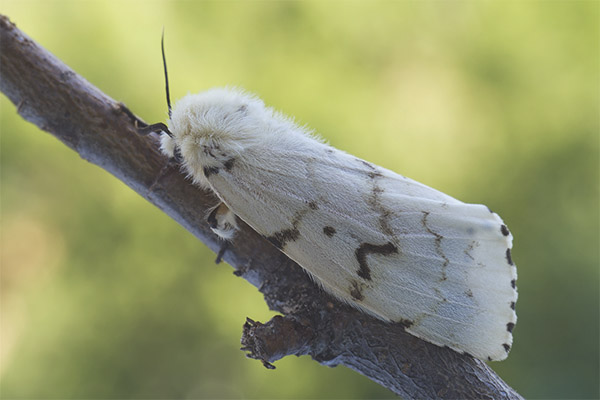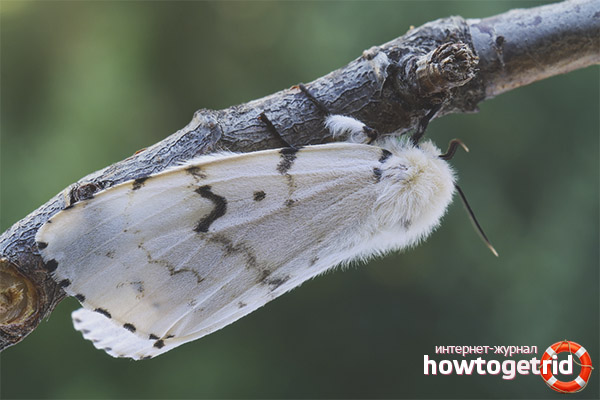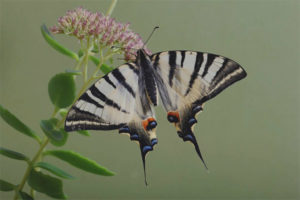The content of the article
Butterfly The silkworm is one of the most famous insects in the world. Initially, they appeared in the Himalayas and were wild, today this type of butterfly is considered a domesticated species. This process occurred a long time ago, around the third millennium BC.
Breeding silkworms is widespread. For this purpose, mechanized yarn production farms are created, from which real silkworm silk is later obtained.
Characteristics, habitat
These butterflies became known for their uniqueness. They make cocoons, which later people use as the material for the manufacture of real silk. Insect silkworm is directly related to the genus Shelkopryadovyh. The silkworm belongs to the butterfly family.
As for the habitat, it is Asia, preferably South-Eastern territory, which has subtropical climatic conditions. It is less common to find such an insect in the Far East, in places with approximately the same climate. In order to make silk, people have learned to breed insects in other regions, the only condition for their habitation is the presence of such a tree as mulberry, since the Silkworms feed only on them. The life of such a butterfly is up to 12-13 days. And it will be interesting that such a butterfly does not fly, it simply does not know how to do it.
Life cycle
Despite many advantages, the Silkworm is one of the most famous pests in the garden. It is not so easy to get rid of him, for any gardener the appearance of such a butterfly in the garden is not a joyful event, it is the beginning of a real disaster.
The life cycle of a silkworm butterfly consists of four stages and lasts approximately 2-2.5 months.The silkworm is a practically immovable insect whose purpose in life is to lay eggs. A female insect at a time can lay off up to 650 pieces. Laying eggs takes about three to four days.
Insect species
In nature, there are quite a few species of silkworm insect. The most famous:
- Silkworm nun - usually found in forests. The wings of this type of insect are black and white, dark gray, the whiskers have long notches. Breeding period - only in summer once every 12 months. For the coniferous forest, this caterpillar is not favorable, it causes significant harm, as it concerns such trees as oak, birch, beech.
- Silkworm ringed - this name was due to the peculiar laying of egg-shaped. It debugs eggs up to three hundred pieces at a time. The worst enemy for apple trees. In appearance, light brown, dirty yellow butterfly covered with fluff. Specifically, the cocoons of this silkworm are used to make silk.
- Silkworm pine - the main enemy of pine, can destroy the tree.The wings of this type of insect are dark brown, very similar to the color of the bark of pine trees. In size one of the largest species of butterflies. A female with a wingspan can reach the size of 10 centimeters, and the male - up to 7 centimeters.
- Silkworm unpaired - one of the most dangerous pests in the world. Such an insect can destroy up to 3.5 million plantings. This name was given to him because the size of the female and the male are too different.
Diet
Basically the diet of the Silkworm consists of the leaves of the mulberry tree. The larvae that the female debugs have an insatiable appetite, so they eat a lot and grow too fast. Silkworms can also eat figs, leaves of ficus, milk tree and many other plantations. Those butterflies that are in captivity, can eat the same salad, which is very bad for their health and the whole life cycle, and, accordingly, for offspring. To date, experts are developing a special universal feed that will be suitable for all types of silkworm, both in freedom and in captivity.
Life cycle and reproduction
Silkworm on the method of reproduction is no different from the method of reproduction of other butterflies. After the female debugs the eggs, the first caterpillars should be expected within ten days. If the insect is in captivity and reproduction does not occur naturally, but artificially, a certain temperature of about 24-27 degrees must be maintained. The silkworm butterfly caterpillar increases its appetite daily, and every day it needs more food.
On the sixth day of life, the insect larva freezes and stops eating food and the very next day, leaving the cocoon, begins to feed again with a big appetite. This is the so-called molt, in total in the development cycle there are four of them. Fully development of the larva lasts about a month. Under the lower jaw of the insect, a so-called papilla is formed, which further releases the silk thread.
This thread, though thin, can withstand a weight of up to 15-17 grams. This thread can be distinguished not only by adult insects, but also by newly born larvae. The Silkworm often uses such a feature in the form of a life-saving “vest” - if a threat has arisen, the caterpillar quietly hangs on its thread.
The caterpillar in the end of its life cycle takes a small amount of food, and during the construction of the cocoon refuses from the diet. During such a period, the silk thread of the caterpillar is produced in excess, so it constantly stretches behind it. Also during this period, the caterpillar behaves restlessly, constantly in search of a favorable area for building its cocoon. Most often it is a branch of small size. The entire construction of the cocoon takes about three to five days. The caterpillar uses about a kilometer of silk thread.
Very rarely there are cases in nature when silkworms break one cocoon into several individuals, up to about four at a time.
The weight of a regular cocoon of a silkworm can reach four grams, and up to three centimeters in length. There are exceptions that reach six to seven centimeters.
The shape of the cocoon is not always the same, it happens:
- round;
- oval;
- ovoid;
- oblate.
The characteristic color is white, very rarely golden, with a touch of green. The larvae occur in three to four weeks. Since the jaw is still missing, the hole in the cocoon is made with the help of salivation, absorbing the cocoon itself.
If such a process occurs in the laboratory, the pupae of the insect are killed, since the cocoon damaged by saliva ceases to be valuable for the production of silk raw materials. Some countries of these mortified pupae are used as a culinary delicacy.
Breeding of the silkworm itself is quite common, especially in Asian countries. They create a special farm, which subsequently produce the desired silk thread.
Video: the birth of silkworm butterflies













To send